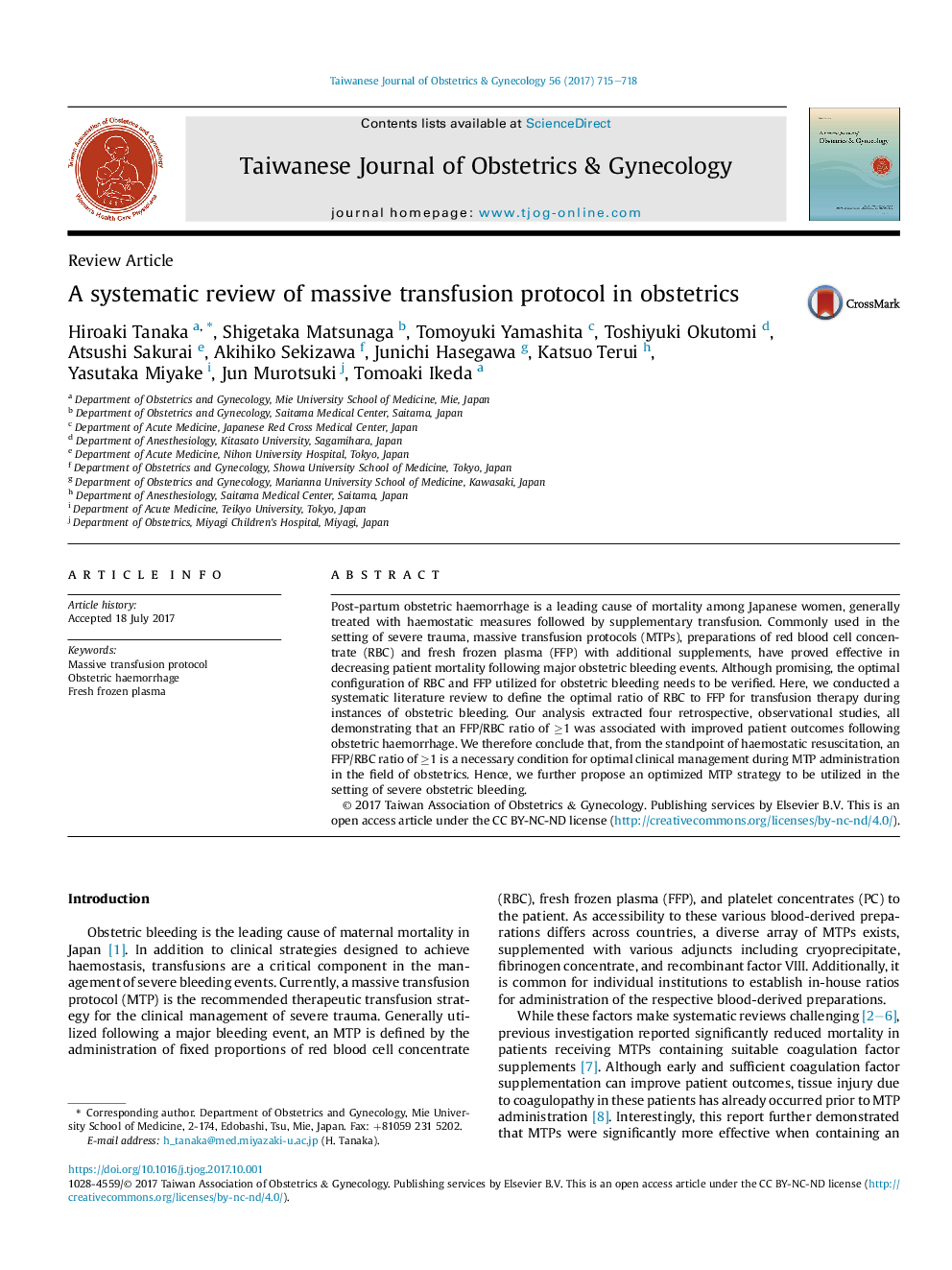| Article ID | Journal | Published Year | Pages | File Type |
|---|---|---|---|---|
| 8784455 | Taiwanese Journal of Obstetrics and Gynecology | 2017 | 4 Pages |
Abstract
Post-partum obstetric haemorrhage is a leading cause of mortality among Japanese women, generally treated with haemostatic measures followed by supplementary transfusion. Commonly used in the setting of severe trauma, massive transfusion protocols (MTPs), preparations of red blood cell concentrate (RBC) and fresh frozen plasma (FFP) with additional supplements, have proved effective in decreasing patient mortality following major obstetric bleeding events. Although promising, the optimal configuration of RBC and FFP utilized for obstetric bleeding needs to be verified. Here, we conducted a systematic literature review to define the optimal ratio of RBC to FFP for transfusion therapy during instances of obstetric bleeding. Our analysis extracted four retrospective, observational studies, all demonstrating that an FFP/RBC ratio of â¥1 was associated with improved patient outcomes following obstetric haemorrhage. We therefore conclude that, from the standpoint of haemostatic resuscitation, an FFP/RBC ratio of â¥1 is a necessary condition for optimal clinical management during MTP administration in the field of obstetrics. Hence, we further propose an optimized MTP strategy to be utilized in the setting of severe obstetric bleeding.
Related Topics
Health Sciences
Medicine and Dentistry
Obstetrics, Gynecology and Women's Health
Authors
Hiroaki Tanaka, Shigetaka Matsunaga, Tomoyuki Yamashita, Toshiyuki Okutomi, Atsushi Sakurai, Akihiko Sekizawa, Junichi Hasegawa, Katsuo Terui, Yasutaka Miyake, Jun Murotsuki, Tomoaki Ikeda,
